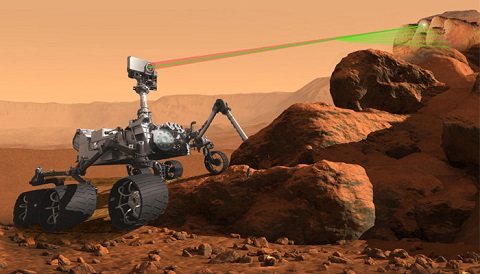After intensive engineering and design studies NASA has announced the final design and construction of the Mars 2020 rover. These studies evaluated proposals for instrument packaging prior to the announcement in late J uly of 2016.
uly of 2016.
The unnamed rover is set to launch in the summer of 2020 and will go through its own “seven minutes of terror” by February in 2021. Mars 2020 rover has now reached the third or fourth Key Decision Points before it makes the trip to the launch pad.
“The Mars 2020 rover is the first step in a potential multi-mission campaign to return carefully selected and sealed samples of Martian rocks and soil to Earth,” says Geoffrey Yoder the Nasa Science Mission Directorate.
The rover has many steps before it gets to launch out to the Red Planet. Phase A is the concept and requirements definition and Phase B is the preliminary design and technology development. NASA, as of last week, has officially approved the 2020 rover’s entry into Phase C, the final design and fabrication of the rover. Now the only thing left to do is Phase D which includes assembly, integration, and testing leading up to the launch.
Instruments for Mars 2020
Mars 2020 will explicitly be looking for signs of life, past and present, when it lands on Mars. The goal for this mission is to explore regions of the planet where life could have existed. For this mission this little rover will need a variety of different instruments from around the world. Primarily from the U.S., France, Spain, and Norway.
Similar to its cousin rover Curiosity, Mars 2020 will be equipped with a laser and drill complete with replacement bits. In total, Mars 2020 will weigh 1,050 kilograms, 150 kilograms more than Curiosity. That makes it the heaviest payload fielded on any planetary surface.
Other instruments on Mars 2020 include:
PIXL: Planetary Instrument for X-ray Lithochemistry. PIXL is an X-ray fluorescence spectrometer that will enable high resolution analysis of soil samples. The rover will then package and cache the soil samples it has collected for potential sample return missions from the planet.
RIMFAX: The Radar Imager from Mars will generate a powerful and ground-penetrating radar that can probe the earth under the rover over several dozen meters.
MEDA: Mars Environmental Dynamic Analyzer will provide extensive meteorological measurements. It can measure wind direction, speed, temperature, pressure, humidity, and dust particle shape and size during dust storms.
MOXIE: Mars Oxygen ISRU Experiment will test the ability for astronauts to live on the planet by producing oxygen from carbon dioxide. Mars 2020 draws the carbon dioxide from the tenuous Martian atmosphere.
SHERLOC: The Scanning for Habitable Environments with Raman and Luminescence for Organics and Chemicals. Essentially SHERLOC is a “life-finder” that can utilize fine scale UV-imaging to search for organic compounds.
SuperCam: SuperCam will analyze the chemical composition of the terrain and can detect the presence of organic compounds in rocks and regolith from a distance.
Mars Helicopter Drones
For the first time, humans will be able to hear the sounds of Mars. A set of special microphones will fly with the Mars 2020 rover and hopefully it will answer a few questions. What does a Mars dust storm sounds like? What kind of noises does the surface of this Martian planet make?
Putting microphones on Mars isn’t a new idea. In December of 1999 The Mars Polar Lander had a microphone. Unfortunately it never made it back to Earth as it crashed on the descent. Later a microphone on the Mars Phoenix Lander made it to the planet intact but was switched off by engineers. The engineers were concerned that MARDI (descent imager package) would interfere with other crucial electrical systems. ‘ESA’s Cassini-Huygens acoustic sensor returned some brief audio during its descent through the atmosphere of Saturn’s large moon, Titan.
NASA has been funding the development of helicopter drones to be sent to Mars. There isn’t any official word yet if the technology would launch with Mars 2020. Their goal is to have a drone that would make short scouting flights using 2020 rover as its base.
Download your FREE 14 Day Trial of PlanSwift today!
